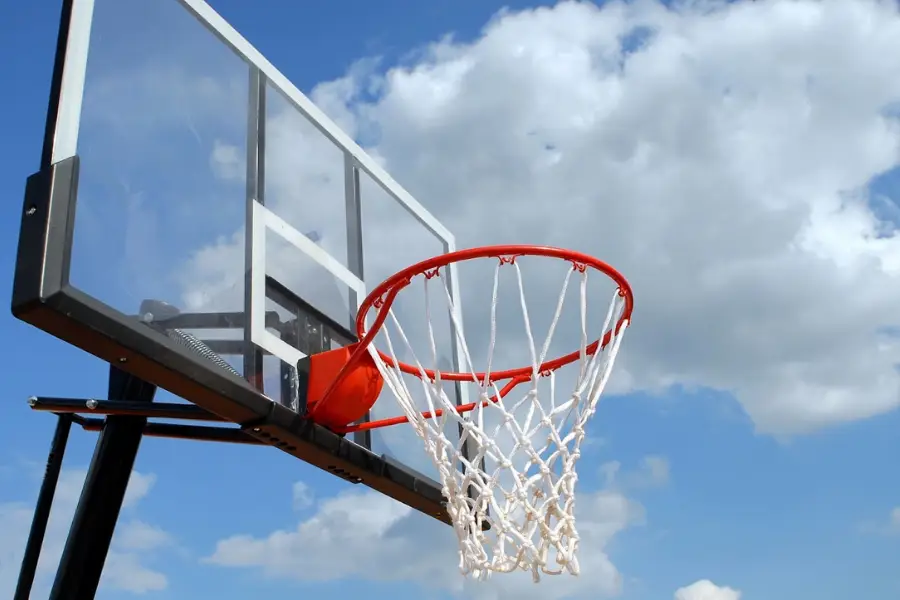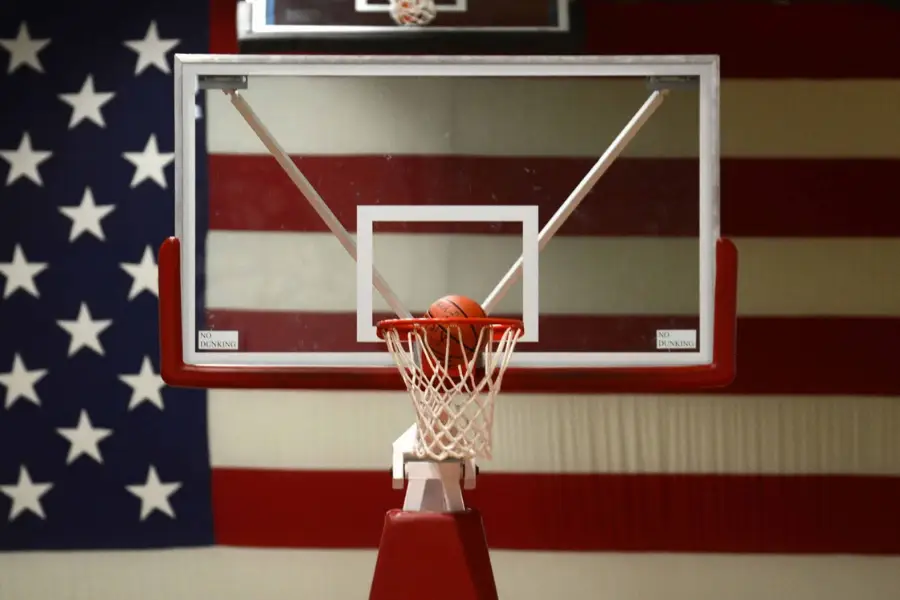Acrylic Vs. Polycarbonate Backboards – Which One Is Better?

Choosing the right basketball backboard can make a big difference in your game. Two popular options are acrylic vs. polycarbonate backboards. Each type has its own advantages and disadvantages.
When deciding between two, durability, rebound, and portable set availability are important. Let’s read on and find out the differences between these backboard materials and choose the best one for you!
Similarities Between Acrylic And Polycarbonate
These two backboards are made of strong and durable plastics. Thus, they offer excellent resilience against the impact of basketballs during games.
This ensures the backboards can withstand regular use and remain in good condition. They offer small and medium sizes, from 44” to 45” for adult players and smaller ones for kids.
Both are clear plastic materials, providing good visibility for players. They also enhance the hoop’s aesthetics and allow for better ball tracking during the game.
Regarding pricing, both are generally equal when buying a basketball hoop. You can find options within your budget range regardless of your chosen material.

Differences Between Acrylic Vs. Polycarbonate Backboards
Acrylic backboards last longer outdoors, resisting UV damage for over 20 years. Meanwhile, polycarbonate can weaken in 3-5 years. Polycarbonate offers better bounce than acrylic, which is lighter and gives less bounce. Besides, acrylic comes in larger sizes for pros, while polycarbonate doesn’t. Thus, when the backboard is perfect for outdoors, acrylic is best for indoors.
Durability
When it comes to durability, polycarbonate is often the stronger option. It can withstand more impact without cracking or breaking. Thus, it can be more suitable for aggressive play.
Yet, its durability can be affected by exposure to UV light. When used outdoors, it can become cloudy, yellow, and brittle after 3-5 years.
In contrast, acrylic is also durable but doesn’t have the same issues with UV exposure. Even under the pressure of rocks and stray baseballs, these backboards remain clear for longer. Thus, it can be a better choice for outdoor basketballs in terms of durability.
Bounce
Acrylic backboards are lightweight, which can affect the rebound performance while playing. When a basketball hits an acrylic backboard, it doesn’t provide the same bounce level as a heavier one. This means that players might have to deal with less predictable bounces.
Polycarbonate is heavier, offering better bounce and spring when the balls hit it. It promises a more consistent rebound experience for players with traditional basketball backboards. They can make good basketball shots during the game without worrying too much about the bounce angle.
Wall-Mounted Size
Smaller backboards (44″ to 54″) are comparable to acrylic and polycarbonate. They usually range from $100 to $500.
However, larger backboards (72″) are only available in acrylic, with high-quality adjustable options. Polycarbonate backboards are not available in this size. Thus, if you choose the 72″ size, glass and acrylic backboards are the appropriate options.
Portable Set Availability
When it comes to portable basketball hoops, both acrylic and polycarbonate are available. Yet, there are differences in size availability.
For smaller portable sets, you can find models made of both acrylic and polycarbonate. However, larger professional-sized sets (72″) only come in acrylic. You will not find portable backboard hoops of this size made from polycarbonate.
Thus, both materials are suitable for portable hoops. Yet, acrylic offers more variety in size options, especially for larger sets.
Best Places To Use
Polycarbonate backboards are better options for indoor use because they maintain strength and durability.
In contrast, acrylic backboards are a great choice for outdoor settings. Community basketball courts or residential backyards are ideal places for them. They can provide durability and clarity without being affected by outdoor elements.
So, acrylic is the best choice for outdoor play. On the other hand, polycarbonate is more suitable for indoor courts.

Which Type Of Backboard Is The Better Choice?
In general, acrylic materials are the better choice for basketball backboards. While polycarbonate is initially resilient, acrylic proves superior in various ways.
Acrylic can withstand sunlight without becoming brittle or discolored over time. This can ensure long-lasting clarity and appearance. It is also cost-effective to produce and lightweight for easy handling, making it suitable for portable hoops. Additionally, you can assemble them more easily for repairing or cleaning if necessary.
Unlike polycarbonate, acrylic resists scratches and maintains its quality over time. Thus, it retains a transparent appearance and consistent rebound.
Overall, acrylic backboards stand out as better options for outdoor use or long-term investment due to their durability, appearance, and performance.

How To Choose The Best Acrylic Backboard?
Thickness: Consider the thickness and size when choosing the best acrylic backboard. You should look for those made from ½-inch thick acrylic for optimal ball response. They can provide about 85% of the response of tempered glass. Thicker acrylic ensures better performance and durability.
Size: You should check the backboard size based on your available space. A 44″ backboard is suitable for small driveways, saving space. Meanwhile, larger sizes ranging from 60″ to 72″ are ideal for larger driveways and basketball courts.
Support structure: To choose the best basketball backboards, check their support structure, including the frame and mounting system. A sturdy support structure is essential for stability and safety.
Brand: It’s necessary to choose reputable brands known for their quality and durability. You can read reviews and recommendations from other users to choose the best brand. Besides, it’s wise to check the warranty coverage the manufacturer offers. A longer warranty period promises better quality and durability.

Conclusion
When choosing between acrylic vs. polycarbonate backboards, consider how tough you need it to be and how well it performs. Acrylic can take a hit without breaking easily. It is good for places like parks where it might get messed with. Yet, it has a stronger rebound performance than polycarbonate, which can wear out in sunlight.
Polycarbonate is better for indoor games or places where it won’t get too much sun. Overall, acrylic is often the favorite for players because it lasts longer, works better, and comes in different sizes.
